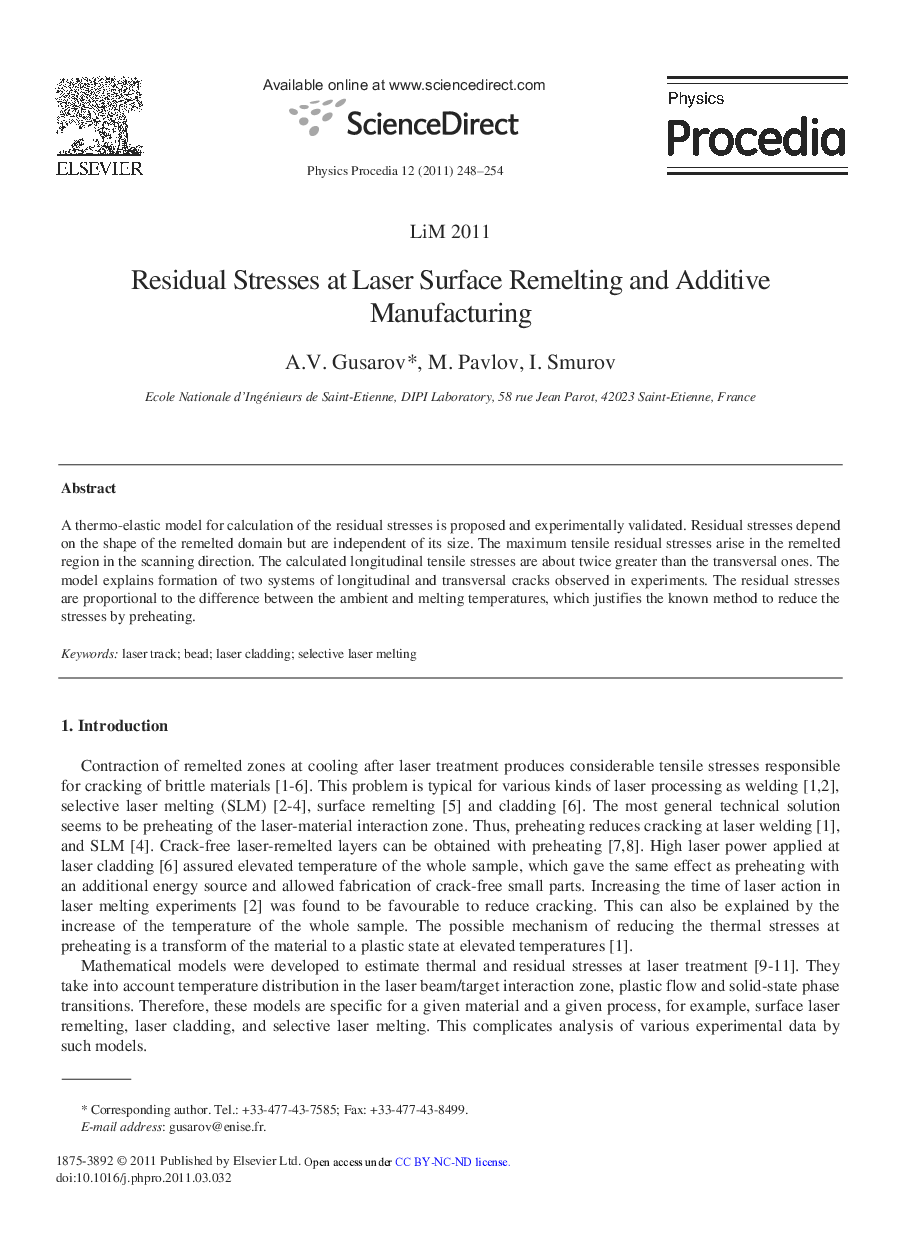| Article ID | Journal | Published Year | Pages | File Type |
|---|---|---|---|---|
| 1873710 | Physics Procedia | 2011 | 7 Pages |
Abstract
A thermo-elastic model for calculation of the residual stresses is proposed and experimentally validated. Residual stresses depend on the shape of the remelted domain but are independent of its size. The maximum tensile residual stresses arise in the remelted region in the scanning direction. The calculated longitudinal tensile stresses are about twice greater than the transversal ones. The model explains formation of two systems of longitudinal and transversal cracks observed in experiments. The residual stresses are proportional to the difference between the ambient and melting temperatures, which justifies the known method to reduce the stresses by preheating.
Related Topics
Physical Sciences and Engineering
Physics and Astronomy
Physics and Astronomy (General)
